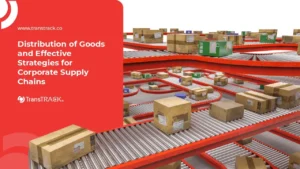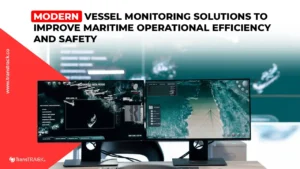Get to Know the Requirements, Procedures, Costs, and Examination Elements for Car Inspection!
Posted on January 2, 2025 by Nur Wachda Mihmidati

Car inspection, often referred to as “KIR” (short for “Kendaraan Bermotor yang Layak Jalan” or “Roadworthy Motor Vehicle” in English), is the cost or premium that vehicle owners must pay to their car insurance company to obtain protection against the risk of loss or damage to their vehicle due to accidents, theft, fire, natural disasters, and various other risks. Car inspections are typically paid annually or monthly, depending on the agreement between the vehicle owner and the insurance company. The size of the car inspection is influenced by several factors, such as the type of vehicle, the age of the vehicle, accident history, and the owner’s location.
Mandatory Requirements for the 2025 Car Inspection (KIR)
The mandatory requirements for the 2025 car inspection (KIR) may vary depending on the rules and regulations in each country or region. However, here are some common requirements that may be needed to undergo the 2025 car inspection:
- The vehicle must be registered and have a valid license plate.
- The vehicle must be more than 4 years old since the date of first registration.
- Vehicle owners must carry vehicle documents such as the Vehicle Registration Certificate (STNK), Vehicle Owner’s Book (BPKB), and vehicle insurance documents.
- The vehicle must be in good condition and safe for use on the road, including the engine, brakes, lights, and other safety systems.
- Vehicle owners must pay the KIR inspection fee according to the applicable rates in the region where the vehicle is registered.
It’s important to note that these requirements may vary depending on the regulations in each area or country. Therefore, it is advisable to visit the local government website or office for more information on the 2025 car inspection requirements.
Car Inspection Registration Process
Car inspection (KIR) registration in Indonesia can be done both online and offline. Here is a detailed explanation of the registration process for KIR in Indonesia:
Offline Car Inspection Registration:
Prepare the Documents
The first step in offline KIR registration is to gather all the required documents, such as the Vehicle Registration Certificate (STNK), Vehicle Owner’s Book (BPKB), ID card (KTP), and driver’s license (SIM).
Visit the KIR Registration Office
After preparing all the documents, visit the nearest KIR registration office. These offices are typically located at SAMSAT (One-Stop Integrated Administration System) or local Transportation Department offices.
Fill out the Registration Form
At the KIR registration office, complete the registration form thoroughly and accurately. Ensure that all the information on the form matches the documents you submitted.
Vehicle Inspection
After filling out the registration form, your vehicle will be inspected by KIR officers. Make sure your vehicle is in good condition and ready for the inspection.
Pay the KIR Inspection Fee
Once the inspection is complete, pay the applicable KIR inspection fee. The fee may vary depending on the type of vehicle and the region.
Obtain the KIR Certificate
After the payment is made, you will receive a KIR certificate if your vehicle passes the inspection. Keep this certificate safe, as it will be needed for renewing your Vehicle Registration Certificate (STNK).
Online Car Inspection Registration:
Visit the Official Website
Start by visiting the official KIR website in Indonesia, which is https://kir.dephub.go.id/.
Create an Account
After accessing the website, create an account by filling out the registration form. You will need to provide personal information, phone number, and email address.
Log into Your Account
Once your account is created, log in using the username and password you set.
Fill out the Registration Form
After logging in, complete the registration form with accurate information that matches your submitted documents.
Make the Payment
After filling out the registration form, you will be prompted to pay the KIR inspection fee. Payments can be made through bank transfers or available payment outlets.
Receive the KIR Certificate
Once the payment is confirmed, your vehicle will undergo inspection by KIR officers. If your vehicle passes, you will receive a KIR certificate within a few days.
Latest 2025 Car Inspection Fees
In 2025, the government announced a new policy of eliminating KIR test fees for certain motor vehicles, making them free as a measure to support transportation safety and reduce the financial burden on commercial vehicle owners. This policy applies to public transportation, trucks, and buses that meet certain criteria, such as document completeness and vehicle age. With the free KIR test, it is hoped that vehicle owners will be more motivated to conduct periodic checks so that the quality and safety of vehicles on the road can be guaranteed, while supporting the government’s efforts to create more environmentally friendly transportation.
Elements of Car Inspection
Car inspections (Kendaraan Bermotor yang Layak Jalan) in Indonesia consist of several elements that must be tested to determine if the vehicle is roadworthy and safe for use on the road. Here is an explanation of the elements of car inspection:
Pre-Inspection Stage
The pre-inspection stage is the initial step before undergoing the KIR inspection. This stage includes checking vehicle documents such as the Vehicle Registration Certificate (STNK), Vehicle Owner’s Book (BPKB), and other vehicle-related documents. If the vehicle’s documents are complete, the vehicle can proceed to the KIR inspection stage.
Smoke Tester
A smoke tester is a testing device used to measure vehicle exhaust emissions. Vehicles must meet government-set exhaust emission standards. If a vehicle exceeds these standards, it must be repaired and retested.
Play Detector
A play detector is a testing device used to measure wear and damage to a vehicle’s suspension and steering systems. This device helps identify any issues with the suspension or steering systems that could pose a safety risk while driving.
Headlight Tester
A headlight tester is a testing device used to measure the brightness and alignment of a vehicle’s headlights. Vehicle headlights must meet government standards to ensure safe use under different lighting conditions.
Side Slip Tester
A side slip tester is a testing device used to measure a vehicle’s ability to maintain stability and smoothness during maneuvers. This device helps identify any problems with the suspension or wheel systems that could affect a vehicle’s maneuverability.
Axle Road
An axle road is a testing device used to measure the weight of the vehicle and the distribution of weight on each wheel. This device ensures that the load on each wheel of the vehicle is balanced and complies with government standards.
Brake Tester
A brake tester is a testing device used to measure the performance of a vehicle’s braking system. This device ensures that the vehicle’s braking system functions properly and can be used safely at specific speeds.
Speedometer Tester
A speedometer tester is a testing device used to measure the accuracy of a vehicle’s speedometer. This device ensures that the vehicle’s speedometer functions properly and provides accurate information about the vehicle’s speed.
That is the explanation of the elements of the car inspection test. All elements must pass tests to ensure the vehicle is roadworthy and safe to use on the road.

In conclusion, the article on car inspections can be summarized by highlighting that TransTRACK’s Fleet Management System (FMS) can assist vehicle owners in monitoring their vehicle’s condition in real-time, ensuring that their vehicles always meet KIR requirements. TransTRACK’s FMS includes features such as KIR inspections, engine condition monitoring, and real-time vehicle tracking.
By using TransTRACK’s FMS, vehicle owners can easily take preventive measures and maintain their vehicles in good condition, reducing repair costs and improving operational efficiency. Therefore, to ensure that motor vehicles are always in a KIR-compliant condition, vehicle owners can utilize TransTRACK‘s Fleet Management System. Contact us for more information.
Recent Post
Topic :
vehicle enginevehicle maintenance
Recommended Articles

 Bahasa Indonesia
Bahasa Indonesia








